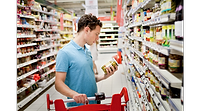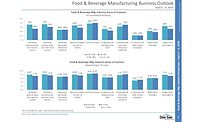Cold Chain
The Alarming Issue of Food Wastage…And How to Combat It

Nearly 34 million people in the U.S. are struggling to afford a nutritious diet. As grocery store prices rose nearly 5.8% in May compared to a year ago, and the price of lettuce alone increased by 25%, many families with children skip meals or reduce intake because they can’t afford enough. In the South, and in rural areas, the struggles are even more severe, as they are for Black and Hispanic households.
This is appalling, and what’s worse, a root cause of both hunger and high prices is entirely avertible: food wastage. It’s staggering how much food is wasted—food that could be feeding the hungry. In reality one-third of all food produced for human consumption is lost to wastage, with most food waste ending up in landfills where it releases harmful methane gases that affect the climate. The financial, environmental and social implications are enormous.
Commodities with the highest level of waste are:
- 45% of fruits and vegetables, equivalent to 3.7 trillion apples
- 35% of fish and seafood, equivalent to 3 billionsalmon
- 20% of meat, equivalent to 75 millioncows
Uneaten food by end users in our homes and restaurants is problematic. But a worse culprit can be found at the beginning of the food supply chain: Crops spoiling too quickly after harvesting or during transportation and manufacturing. This drives up prices and generates a vast amount of waste.
How Do We Fix This?
Scientists discovered that quickly extracting field heat from freshly picked produce prevents the growth of microbes that hasten the process of decay, thus extending the shelf life of vegetables and fruits and improving quality.
This mission-critical process is called “pre-cooling.” Pre-cooling followed by immediate transfer to cold storage and transportation in refrigerated trucks are critical components of what’s called the “cold chain,” a series of precisely coordinated events in temperature-controlled environments. The key is throughput—moving produce and other perishables through the storage, management and transportation system as quickly as possible to maximize freshness, quality and shelf life.
Any delays within this chain of events risks spoilage of the product; for every hour of delay in getting a freshly harvested commodity into a temperature-controlled environment, a day of shelf life is lost. It’s imperative that operators of post-harvest produce never break the cold chain and maintain a constant temperature-controlled environment.
While pre-cooling ensures that produce stays at the optimal temperature for quality and flavor, reducing the number of steps in the cold chain helps get time-sensitive food to consumers faster and fresher. Consolidation centers play a major role in the fresh produce supply chain, allowing stakeholders to streamline distribution from one central location versus requiring pickups from several different locations. Consolidation centers minimize the risk of cold chain breaches by reducing the number of times refrigerated trucks need to be loaded and unloaded—eliminating the waste of millions of vegetables and keeping prices down.
Right now, most cooling facilities are small operations, privately owned by the growers and shippers for their own use. Of the 2,000 cold storage facilities around the country, more than half date back to the 1970s or earlier. Most are antiquated, but with investor capital they can become cutting-edge consolidation centers.
One such redevelopment is underway in Salinas, Calif., famously known as the “Salad Bowl of the World.” It exports more than 400 million pounds of produce each year to Canada, Taiwan, Mexico, Japan and many other countries, and it supplies the U.S. with most of its lettuce and celery, along with broccoli, spinach, cauliflower, strawberries and wine grapes. An old Salinas facility, dating back to 1936, is being redeveloped into the first regional distribution center and cross-dock facility in Salinas.
Right now, an estimated 1.3 billion metric tons of food is wasted annually, translating to a financial loss of $1 trillion per year. Without significant changes, this problem is expected to grow to 2.1 billion metric tons and $1.5 trillion by 2030. We can’t let that happen.
Employing pre-cooling, cold storage and refrigerated transportation systems nationwide is the solution to prevent food wastage. Extending the shelf-life of produce provides Americans with fresher, higher quality products, prevents waste and ultimately helps feed the hungry.
Looking for a reprint of this article?
From high-res PDFs to custom plaques, order your copy today!








